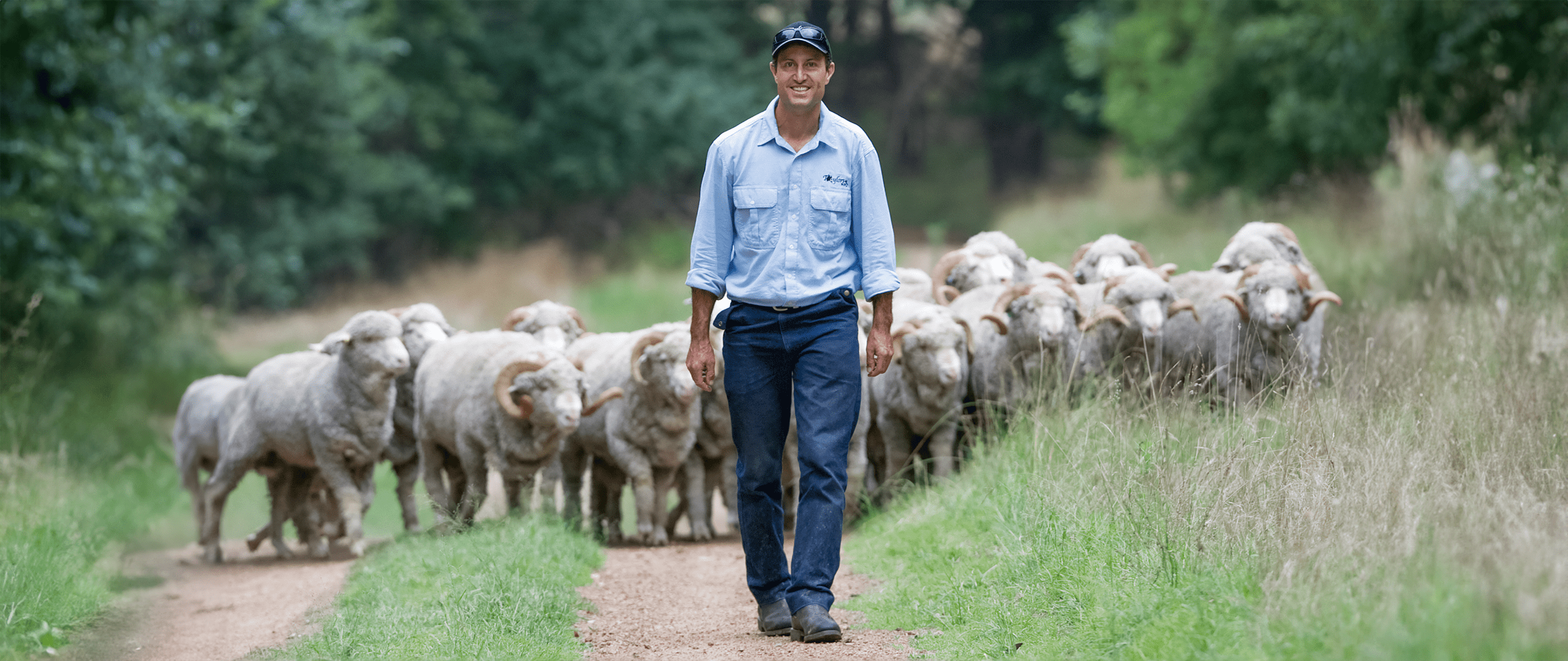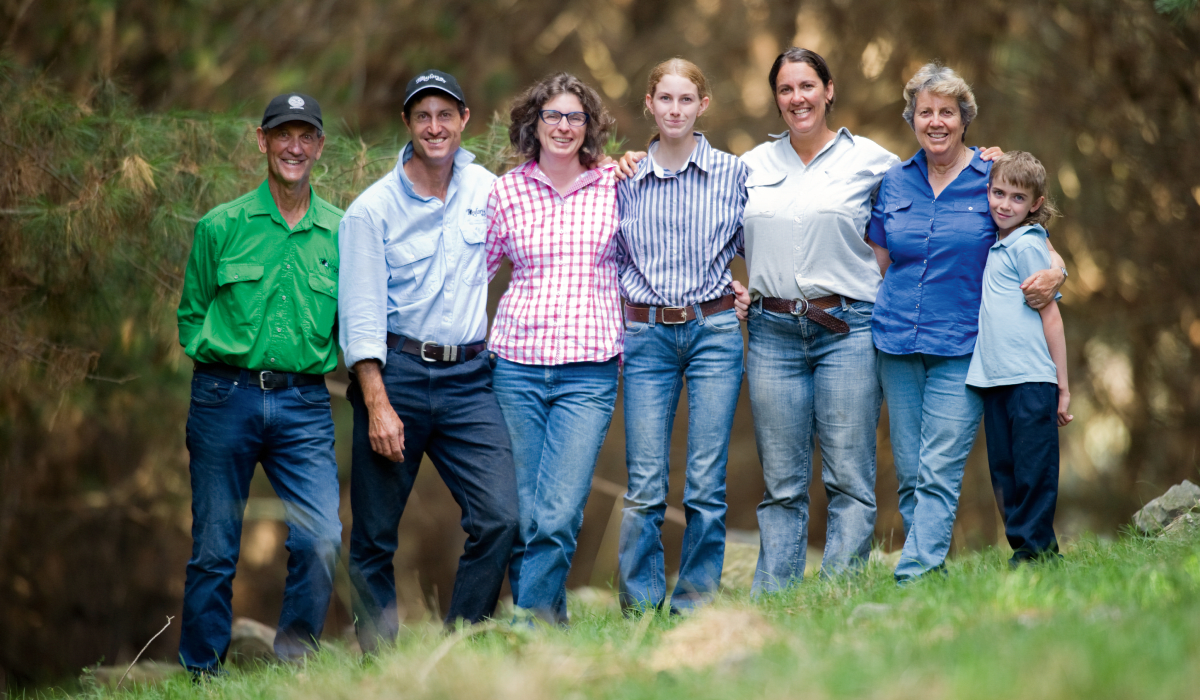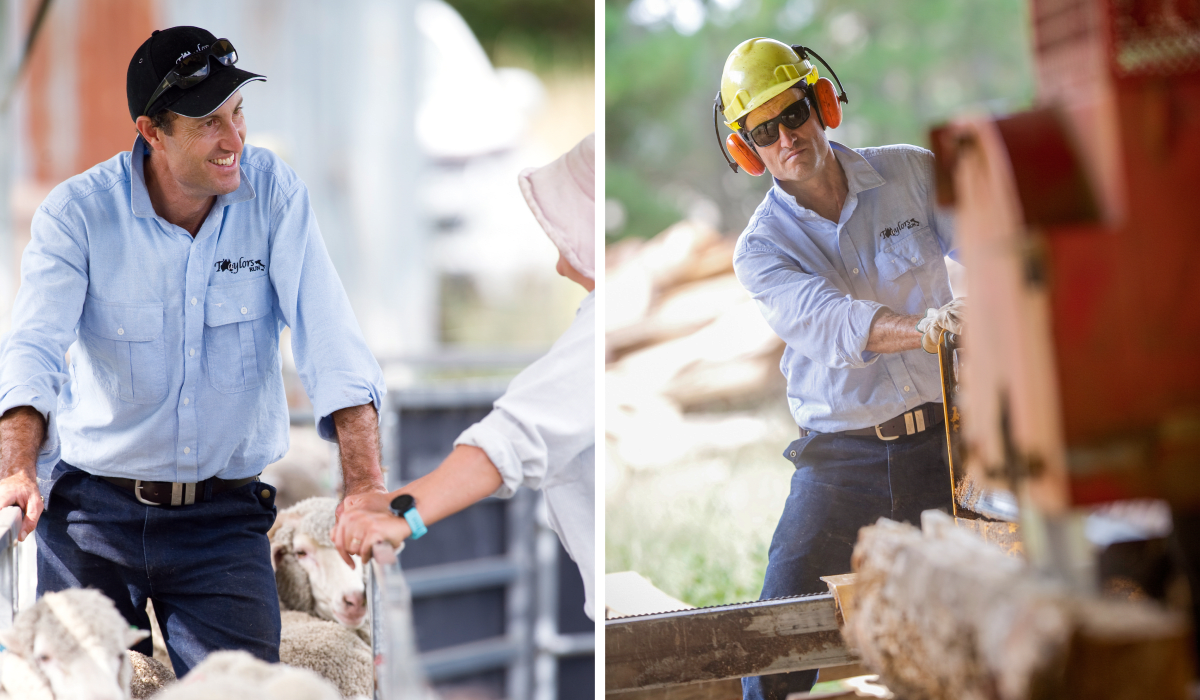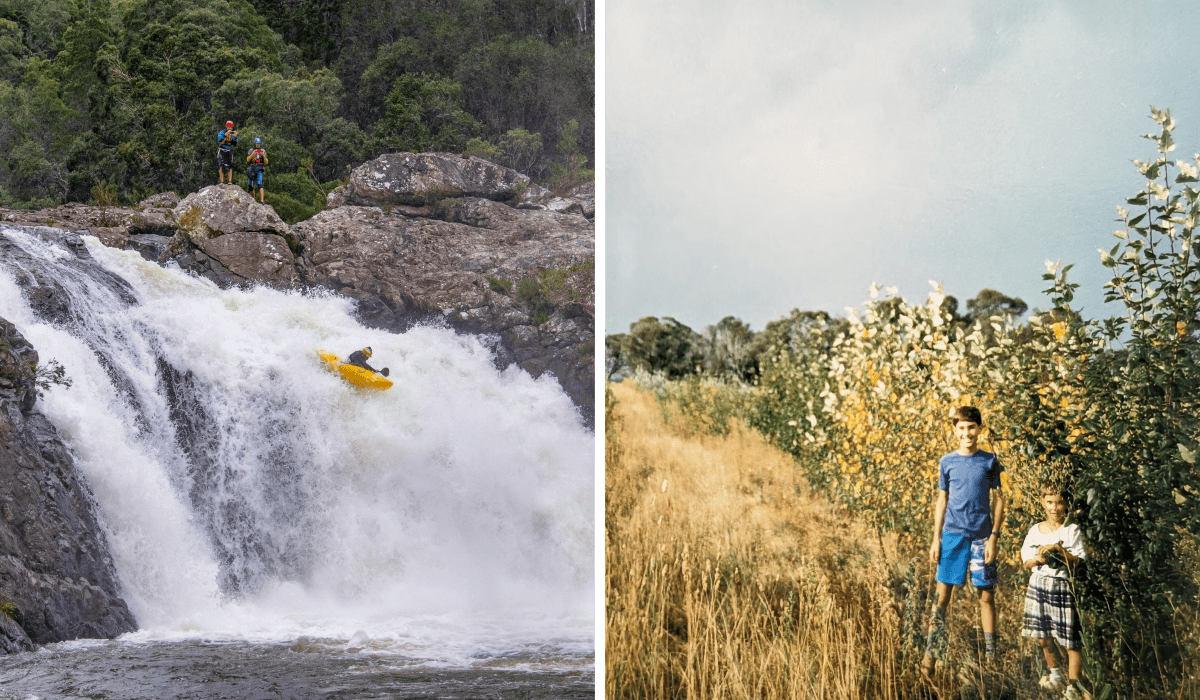
Engineering a future
The 2022 Australian Farmer of the Year is taking diversification to a whole new level.
STORY AMANDA BURDON PHOTOS MATT MIEGEL | OUTBACK MAGAZINE
Sixth-generation wool producer Michael Taylor looks out across the rolling New England Tablelands his family have farmed since 1839. His voice competes with a chorus of cicadas.
Unusually in this coveted superfine wool-growing region, trees outnumber Merinos here. Large stands of grand pines dominate the foreground, juvenile native species skirt contour banks and, on a distant ridge, a fuzzy patch of eucalypts and shrubs suggests wilder terrain still.
“Agroforestry can be as little as having a small plot of trees as a windbreak, a wide-spaced planting across a whole paddock for future harvest, or a conservation plot like that one on the ridge,” the lanky farmer says. “It was non-productive and contained some nice remnant tree species, so we fenced it off for biodiversity.”
Later, pointing to a large rough-barked eucalypt surrounded by juvenile saplings, Michael breaks into his trademark broad smile. “This is what we are most excited about – the natural regeneration,” he says. “Eucalyptus nova-anglica is something special; part of a nationally threatened community. You’ll also see a lot of dead and fallen trees on our place. They are part of the ecosystem, too – where the birds and gliders and bats roost, and reptiles live.”
Long before the term ‘natural capital accounting’ was coined, Michael’s progressive parents Vicki and Jon had begun restoring a landscape all but felled by dieback. Over the past 40 years, the Taylor family have planted some 250,000 trees on Taylors Run in erroneously named Terrible Vale, near Kentucky, NSW. Trees now cover about 20% of the property, and each year Michael tries to add 2,000-5,000 more, to support landscape health, provide livestock shelter and extra income.
Diversity is key to the integrated business the 2022 Australian Farmer of the Year manages – 5,000 Merino sheep, a mixed Angus herd, 180ha of commercial timber and an on-site mill, as well as farm-stay accommodation. He is first and foremost a grower of strong, bright superfine wool sought by the finest Italian suit makers. But Michael’s also a dedicated father, engineer, photographer, intrepid white-water kayaker and, increasingly, an advocate for productive, profitable agricultural enterprises that “work with nature, rather than against it”.
The passion for trees is in his bones. He recalls a childhood filled with tree planting and, like his parents, all 4 grandparents were keen gardeners. “They appreciated the beauty of the natural environment and they did a lot of travel, too,” he says. “They understood the natural cycles.”

Michael with his father Jon, wife Milly, daughter Nina, sister Katherine, mother Vicki and nephew Lindon.
Vicki remembers an energetic young son with broad interests who “never stopped still for a second”. “Michael was always very outward-looking and loved being with people as a child, especially the overseas backpackers who came to work on the farm,” she says. “We encouraged him to go off and study after school.”
When he returned in 2004 with his French-born wife Milly, after a decade studying engineering in Melbourne and “working in cubicles”, the property was foreign. He says his father regarded him like an alien, but tolerated challenges to convention. “I didn’t take anything for granted; I questioned everything,” Michael says. “Being away had given me a totally different perspective.”
Enduring 3 droughts will do that, too. Vowing never to hand-feed livestock again after the second drought in 2014, Michael passionately pursued sustainable ecosystem management to underpin production, building on controlled grazing to maintain 100% ground cover and diversifying tree planting. Improved lambing percentages, reduced land degradation and carbon sequestration have resulted, with agro-forestry adding further income security. “It’s all about looking at the systems that exist and modifying them to suit your own conditions and business,” he says. “If you don’t get out and experiment, you never learn.”
Michael’s personal quest to understand, trial and verify new practices, marks him out as an innovator. Over the years he’s engaged with countless university research teams, Landcare, grower groups such as Tablelands Merino and the Australian Ethical Merino Growers Co-operative, and the Agri-Woodlands Mentoring Program. A regular presenter at field days and conferences, Michael has an “open door policy” at Taylors Run.
“I love people coming in with a different point of view. That’s how you pick up new ideas. Ours is a little farm, but we have tried a lot of things and made a lot of mistakes, and I don’t want others to make the same mistakes.”

Michael in the yards with Katherine and some young wethers; milling timber on site.
For a long time Michael was involved in driving direct wool marketing, and the Taylor family held long-term contracts with Italian wool processors GS Schneider and Reda. “I am generally overly optimistic, so I would hate to say we have exhausted all avenues for direct marketing for small producers and potential processing onshore. In terms of sustainability for agriculture, we need to be looking at more value-adding here.”
During his time managing the Australian Wool Exchange’s sustainability integrity program SustainaWool, wool scientist Dr Paul Swan crossed paths regularly with Michael.
“He is a quietly spoken leader in an area where we have to succeed – selling the sustainability of wool production,” Paul said. “But Michael doesn’t just sell it; he lives it. His is a resilient and highly productive enterprise. He’s been hoovering up all the best knowledge and doing his research, and talking about it.
“From his revegetation work to his early adoption of non-mulesing to his interest in carbon benchmarking and downstream processing, Michael has been at the forefront. He demonstrates care for the country and care for history; he’s the reality of regenerative agriculture rather than the fancy brand.”
Michael says on-farm practices are increasingly being scrutinised in an era when consumers and financiers expect to know how food and fibre is produced. “It’s impacting prices,” he says. “Being certified as having a Responsible Wool Standard Merino clip added over 10% to my wool cheque last year, but I think if you are transparent about the way you run your business and there is traceability back to your farm, it trumps all certifications.”
Still, there is vast potential for woolgrowers to differentiate their product and command higher premiums. “Growing wool is like making fine wine, but unfortunately we haven’t yet figured out how to sell it like wine,” Michael says. “Science is now identifying the isotopes in the fibre that represent different regions, like terroir in wine. It would be far easier if people were eating or drinking wool.”

Michael making the first descent of the Little Nymboida River, over Gangsta Falls, in 2021; pictured with his sisters Nerita and Katherine in a young planting of poplars in 1989.
Shearing is still several months off, when Michael gets to see the luxurious results of a year’s work translated into 15–17 micron fleeces, but the anticipation is building. “We’re about to start classing our sheep, leading up to joining,” he says. “We see last year’s crop of lambs developing and the wool on their mothers. I can’t stop myself in the yards from taking a look, and nearly drooling. It’s so beautiful, and I’m very proud of our wool.”
Like the diverse array of pasture species growing on Taylors Run, its forests are also maturing, and market conditions are good. “Mills are struggling to keep up with the demand for timber and are looking to private forestry,” Michael says. “Over the past year we’ve been doing a big harvest, and the price of sawn timber from our mill is 10 times better than that for logs (in equivalent volume terms). We are planting a bigger mix of trees now, depending on the season and market conditions. Once they get up a bit, it’s relatively simple to manage your grazing around them.”
Detailed modelling over the past decade has shown that the Taylors now sequester (on average) more than 212 tonnes of carbon dioxide equivalent annually. Natural capital accounting, Michael says, is a powerful measurement tool for how farmers “can contribute significantly to carbon and biodiversity markets to reverse climate change through sequestration and restoration or conservation of our natural assets”.
While he would eventually love one of his 3 children to carry on the farming tradition, Michael is open to change. “I would like the next generation to have more options,” he says. “Maybe everyone will become vegans and there will no longer be a market for meat. On our place, I’m trying to keep it simple, but also provide scope for adaptation. It would be really nice to maintain our core Merino genetics, but if that had to go for whatever reason, our most important legacy is how we have maintained the land.”
Paul Swan believes that one of the greatest challenges in agriculture is inspiring confidence during a time of growing uncertainty. In Michael Taylor, he says, we have “an inspirational role model”. For when it can be difficult to see the wood for the trees, Michael has a vision for both.